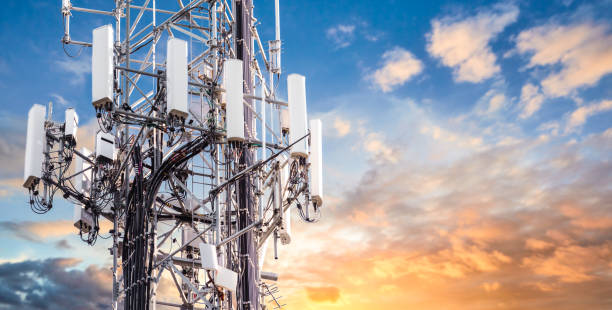

In the digital age, how we connect to the internet is as crucial as the air we breathe. Whether streaming the latest binge-worthy series, logging into a virtual meeting with the team, or gaming with friends, a reliable internet connection can make or break your day. Enter Fixed Wireless and Starlink Internet, two contenders vying for your attention and bandwidth (and, of course, your wallet!). In this article, we’ll introduce a few websites that play the role of internet service provider matchmaker and deliberate the pros and cons of each before crowning your best bet if you’re looking for a new service provider.
Fixed Wireless Internet sounds like something straight out of a tech startup pitch, but it's been around for a while. Instead of endless molehills of wiring, it uses radio signals and wireless LAN infrastructure to transmit internet juice from a local tower to a receiver dish installed at your home or business. There is no need to dig up your yard for cables—a win for those with commitment issues and an aversion to shovels.
Fixed Wireless Internet sends a high-frequency radio signal from a nearby base station or tower to a receiver dish installed at your home or business. The dish captures the signal and converts it into broadband, providing high-speed internet without physical cables routed into your property. The line-of-sight requirement ensures minimal interference, making it a reliable choice for urban and suburban areas.

If Fixed Wireless is the tried-and-true method of wireless internet, Starlink is the new toy everyone wants to shine a light (and switch) on. Backed by Elon Musk's SpaceX, Starlink promises to bring high-speed internet to every corner of the globe - from the burbs of Baltimore to the Australian outback. A bold statement, even by Elon's standards, but does this digital pie-in-the-sky live up to its stratospheric claims? Rango investigates.
Starlink uses a fleet of low Earth orbit (LEO) satellites that communicate with each other and ground stations to provide internet coverage. Users then purchase and install a satellite dish connecting to the satellites above. This setup creates a broad coverage area, aiming to provide high-speed internet even in the most remote regions.


While Starlink is generally enjoying a smooth orbit into Earth, it has some legal loopholes to maneuver to gain a foothold in certain territories. For example, Starlink is (at the time of writing) banned in South Africa and several other African countries due to local ownership/share rights and regulators' non-granting of communication licences.
Given that these countries have historically underdeveloped internet infrastructure, compounded by an endless bureaucratic headache, the need has never been greater for Starlink and Governments to park the ship and come up with an agreement to boost internet services and help developing economies where the need to remedy slow internet is greatest.
Most people don't care about all the technical jargon—they just need a fast internet plan that works straight out of the box or the dish. However, choosing between Fixed Wireless and Starlink for your residential or business internet is more than a one-size-fits-all decision. It depends on your location, budget, and internet needs.
For Urbanites and Suburbanites, Fixed Wireless is your best bet. It's affordable, reliable, and capable of handling daily internet demands. There are generally many internet service providers in your area, allowing you to shop for internet plans tailored to your home or business needs. Plus, there's no need to worry about satellite dishes or the whims of weather.
For Off-Grid Rural Dwellers and Digital Nomads, Starlink is potentially your go-to service provider. If you're in a remote area with limited infrastructure options, the slightly higher cost is worth the investment to stay online and interact with the world. Imagine streaming your favorite shows from a cabin in the woods or video conferencing from a mountaintop - Starlink now makes it possible.
In the battle of Fixed Wireless vs. Starlink, Fixed Wireless is the clear choice for most users. With Fixed Wireless, you’re going to get installed faster, with less hassle, and you’re going to pay less for the service. And, if things go wrong, you’ll be able to talk to a real person if you’re calling Rango. In fact, because we’re a local business, you might be talking to your neighbor when you call for help! Meanwhile, Starlink provides a revolutionary option for remote locations without broadband internet despite its higher price tag and minor teething issues.

While Starlink shines as a solution for rural and underserved areas, Rango Broadband offers a stellar alternative. Serving Washington and Nevada, Rango provides high-speed fixed wireless internet connectivity tailored for rural and underserved communities. With speeds of up to 400 Mbps, Rango ensures robust performance for streaming, gaming, and remote work. Our ongoing investment in rural internet infrastructure has propelled a continually expanding coverage map, connecting more rural areas daily. With competitive plans and reliable customer service from our local team on the ground, Rango Broadband is ideal for those seeking high-speed internet without the high costs and potential weather disruptions of satellite services like Starlink.
Whether you're looking for a simple fix or a starry surprise, both Fixed Wireless Internet and Starlink have something stellar to offer. Our final say is that fixed wireless is your champion for a tried-and-true method with reliable performance.
Browse our internet coverage areas across WA and NV to see if you can benefit from a rocket injection of faster, more reliable internet powered by Rango.
Rango brings reliable internet to underserved areas. We are growing an internet company that people love — offering affordable, hassle-free, and blazing fast broadband everywhere.